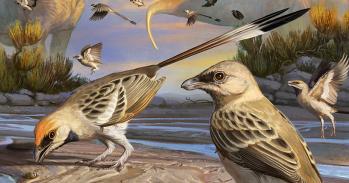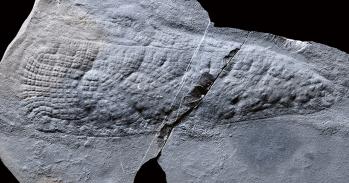
A groundbreaking new study, supported by The Bonita Trust*, that will look at Charles Darwin's impact on attitudes to gender and sexuality, has been announced by Cambridge University.
A groundbreaking new study, supported by The Bonita Trust*, that will look at Charles Darwin's impact on attitudes to gender and sexuality, has been announced by Cambridge University.
Differences between the sexes played a key role in Darwin's thinking, which in turn had a major impact on Victorian society.
Professor Jim Secord
The Darwin and Gender project - funded by a £480,000 donation from The Bonita Trust - will make available for the first time in a single resource Darwin's private and largely unpublished writings relevant to all aspects of gender; in particular, a large body of the great naturalist's own letters.
The research for the three-year project will be overseen by the Darwin Correspondence Project at Cambridge University Library.
It is anticipated that the project will illuminate such private relationships as that of Darwin with his elder surviving daughter, Henrietta. Too young to be much involved in the writing of On the Origin of Species, she is likely to emerge as of hitherto unsuspected importance in the writing of The Descent of Man, Darwin's first public statement on human evolution.
Darwin had a surprisingly large number of other female correspondents throughout his life (some 148). Many of them, such as Mary Boole (pictured), were practising scientists in their own right.
Behind the scenes he was unexpectedly encouraging of their work. Boole, a teacher, was the widow of George Boole who gave his name to Boolean logic, but was also a gifted mathematician in her own right. Another correspondent, Lydia Becker, was a leading campaigner for women's right to vote. Darwin encouraged her botanical observations and sent her a copy of one of his papers to read at a ladies' 'literary' - in reality scientific - society meeting.
A letter from TH Farrer in October 1870, recently researched by the Correspondence Project, is revealing about attitudes to the contribution of women to intellectual life at the time: "One grudges the infinite number of small things to be done, and feels sympathy with women's lot in life. Surely the fact they have all the little daily things to do is enough to account for their not succeeding in work requiring devotion and abstraction."
Farrer, who was recently widowed and caring for a family of small children, wrote to Darwin sharing botanical information.
Among the specific areas that Darwin and Gender will address are Darwin's domestic life, gender in a scientific context and gender and society.
Researchers funded over three years by The Bonita Trust will provide accurate transcripts of the letters and research and write contextual material to make them accessible to both scholars and the general public.
Project director Professor Jim Secord said: "These are extraordinary letters that deserve a wide audience. Differences between the sexes played a key role in Darwin's thinking, which in turn had a major impact on Victorian society."
Ruth Parasol DeLeon, founding member of The Bonita Trust International Advisory Board said: "Many of the issues raised by Darwin in his correspondence have great relevance to modern society. The Darwin and Gender project will allow a wider audience an insight into how his views on gender shaped Victorian society. The encouragement of women in the fields of science and technology is one of Bonita's core activities around the world, and Bonita is delighted to support the important research to be undertaken by Cambridge University."
Darwin, although he believed that women were best suited to domestic life and the care of children, went out of his way to encourage the scientific interests of women who wrote to him.
An example of Darwin's support for early women scientists can be found in a letter to Mary Treat, an American botanist and entomologist. She had been chastised by her mentor, Charles Riley, for jumping to conclusions on larval nutrition and sex determination in adult butterflies. However, Darwin writing in a positive tone, complimented Treat and encouraged her work.
He said: "Your observations and experiments on the sexes of butterflies are by far the best, as far as known to me, which have ever been made. They seem to me so important, that I earnestly hope you will repeat them and record the exact number of the larvae which you tempt to continue feeding and deprive of food, and record the sexes of the mature insects. Assuredly you ought then to publish the result in some well-known scientific journal." [letter to Mary Treat, 5 January 1872].
Treat followed Darwin's advice and repeated her experiments and published in the American Naturalist.
The Darwin and Gender project also includes an educational element to its work. Funding from The Bonita Trust will provide for an education officer to work in partnership with schools to bring the material to as wide an audience as possible.
*The Bonita Trust was renamed the Parasol Foundation in 2015
This work is licensed under a Creative Commons Licence. If you use this content on your site please link back to this page.





